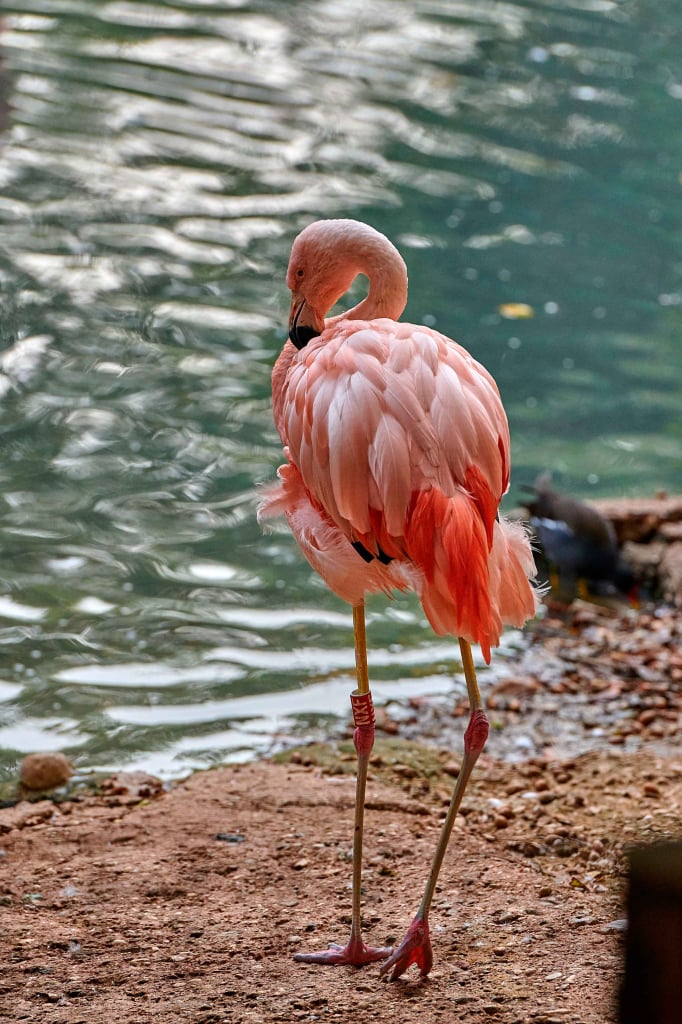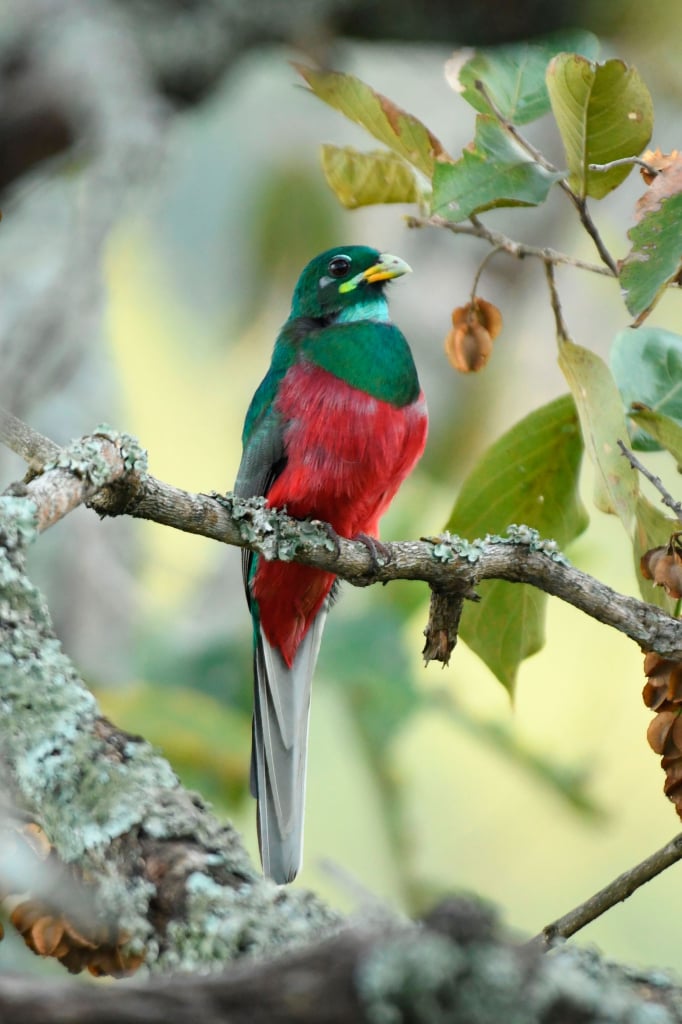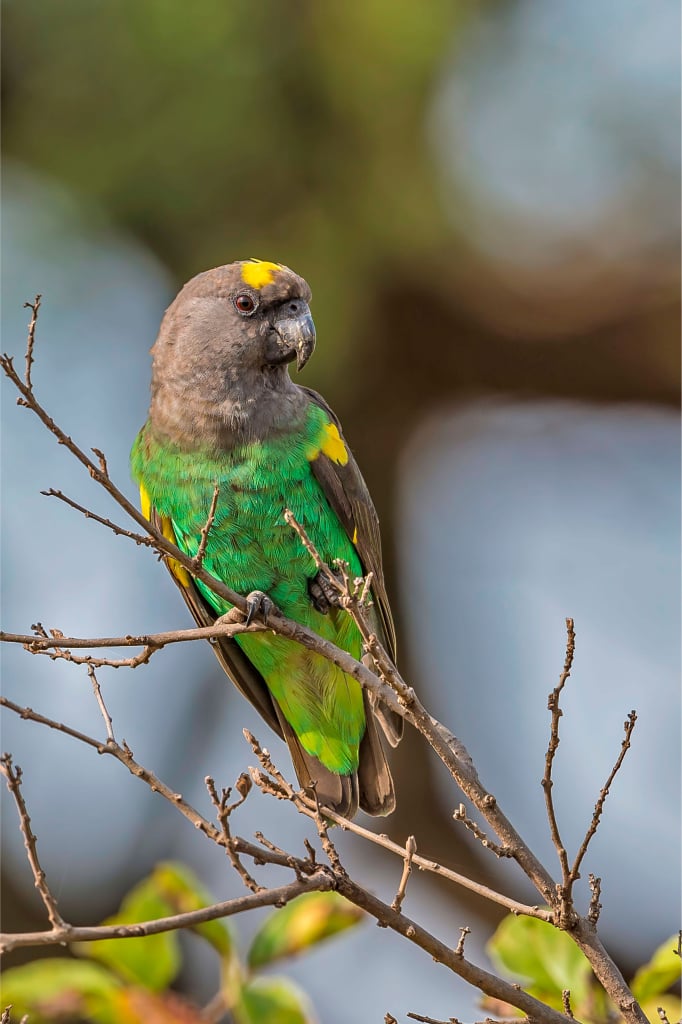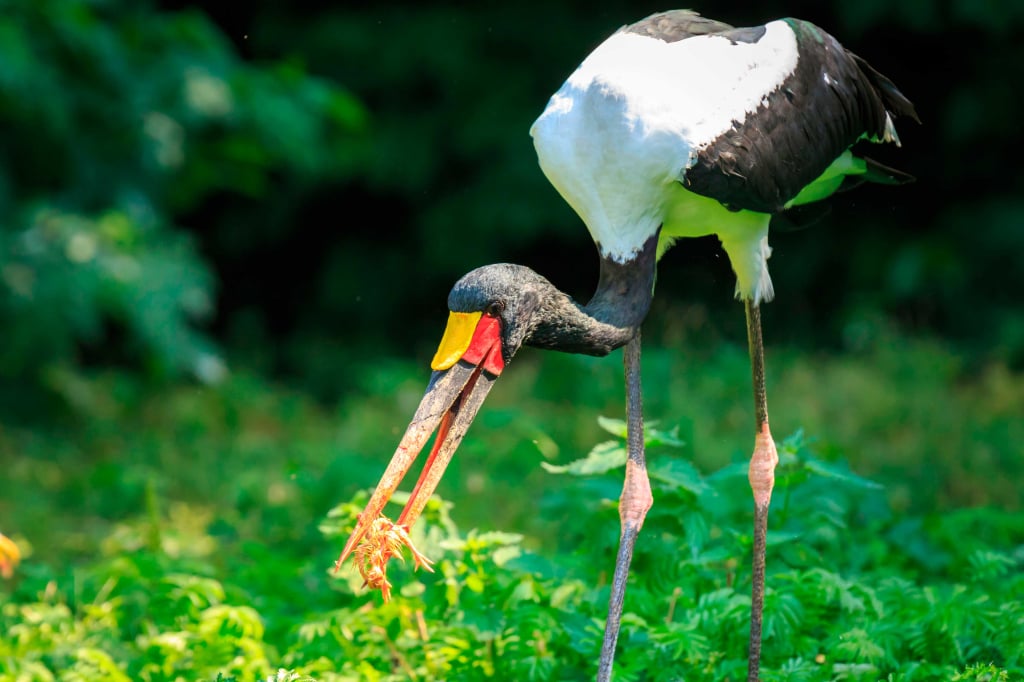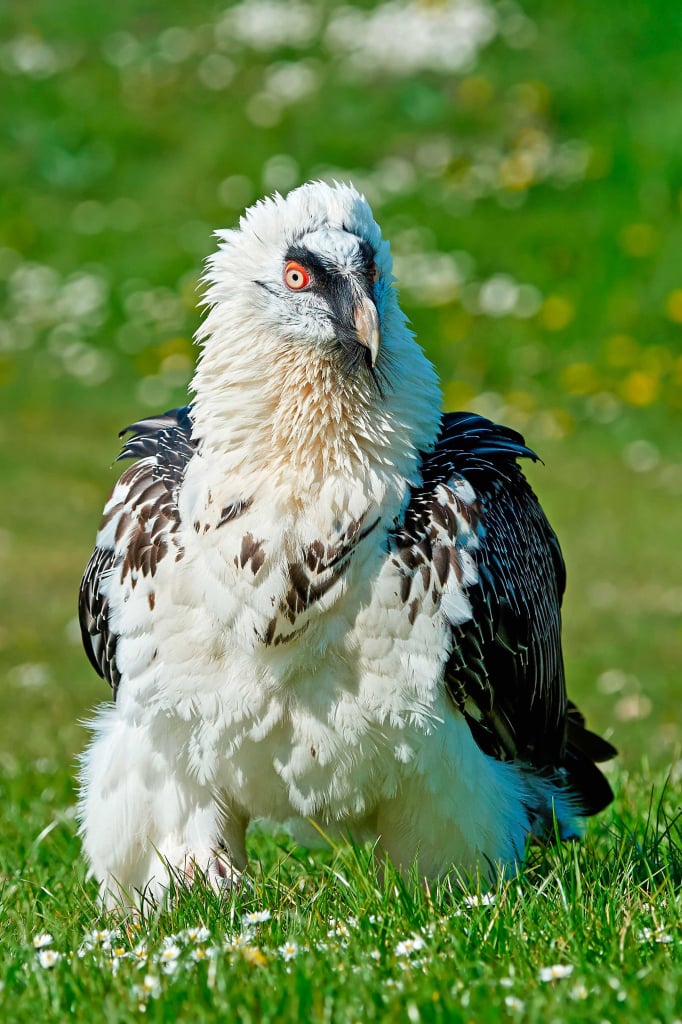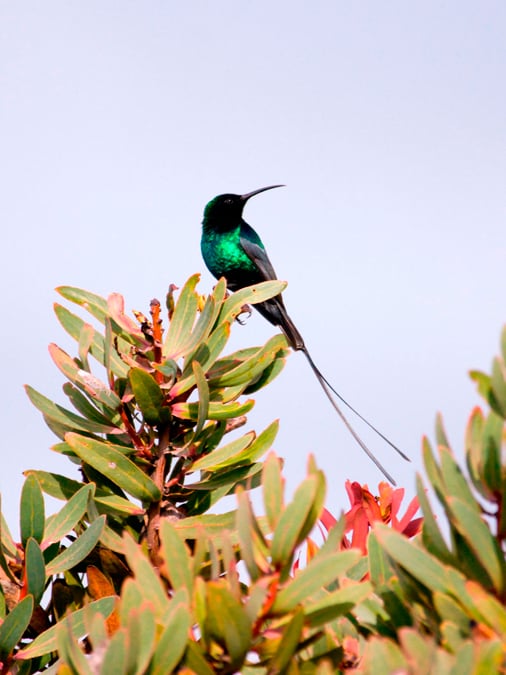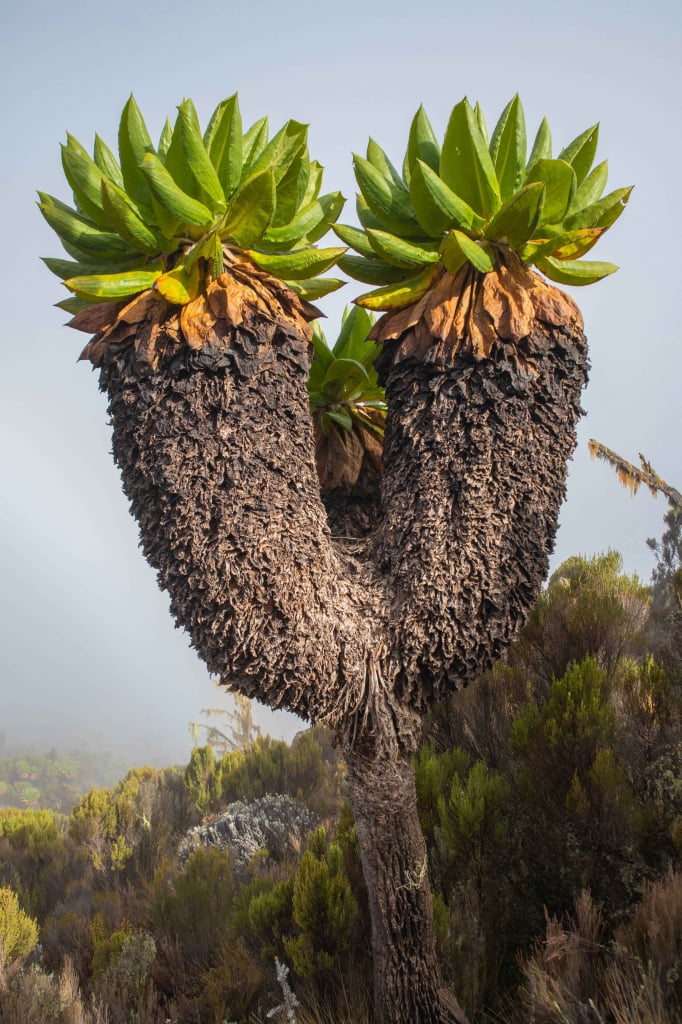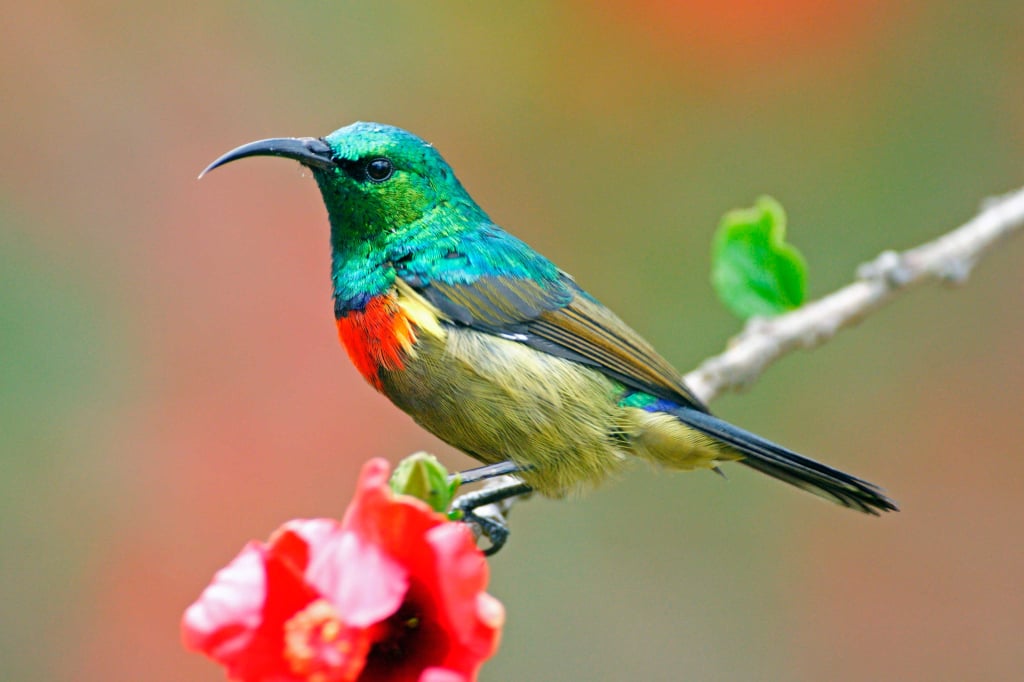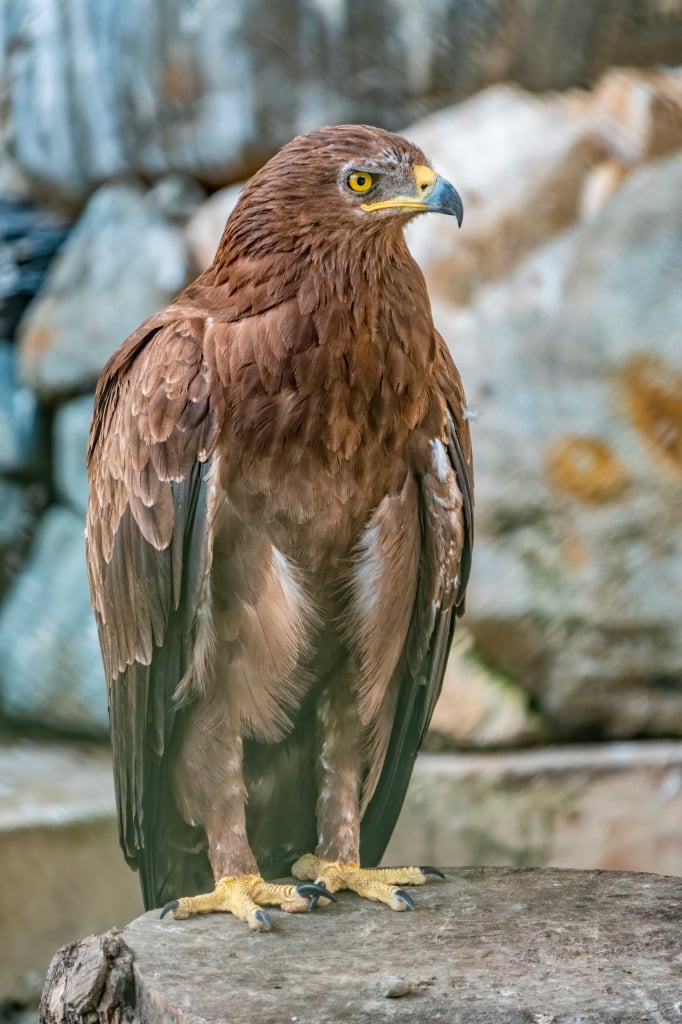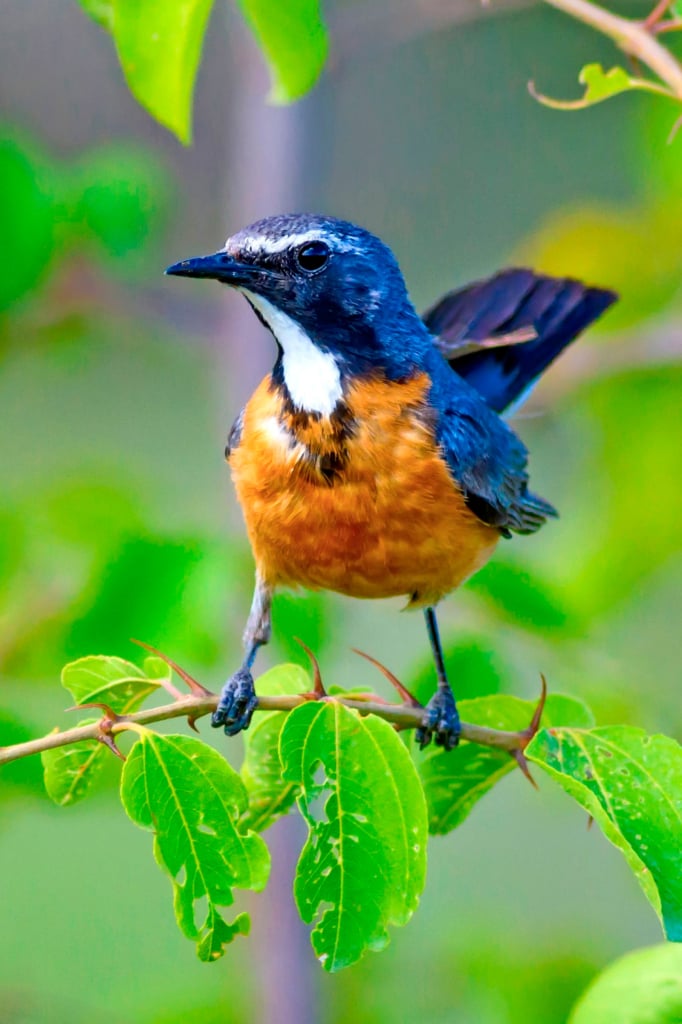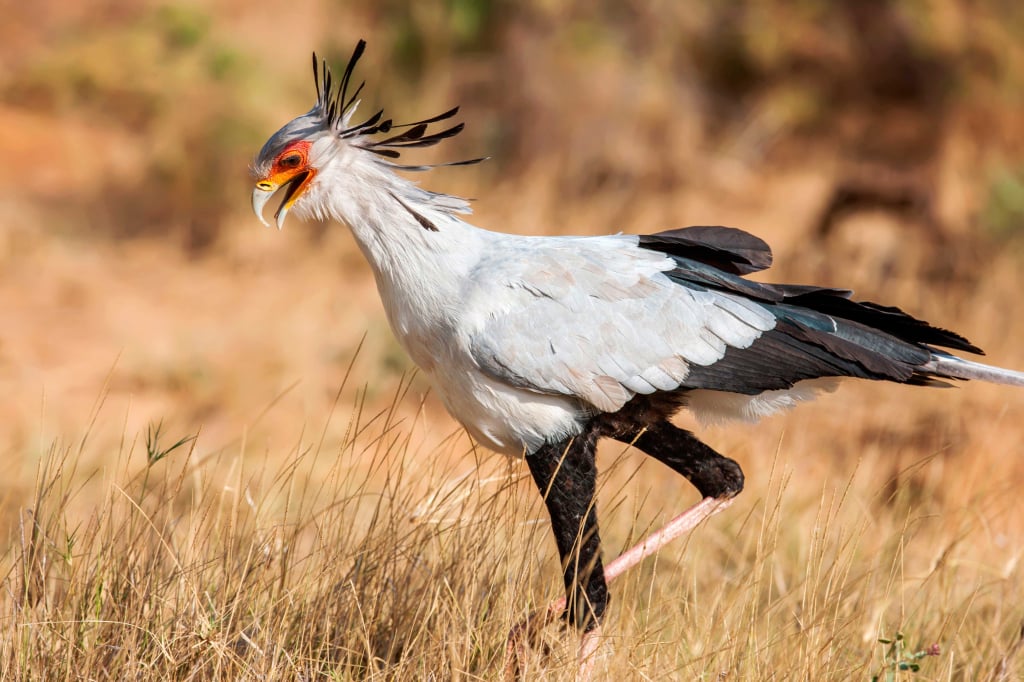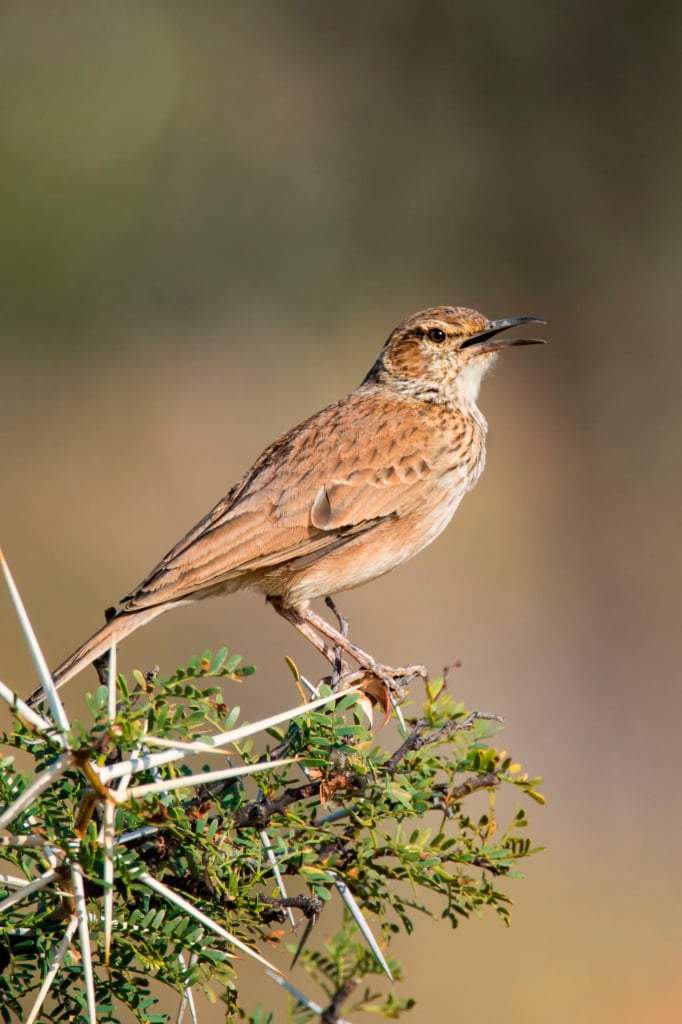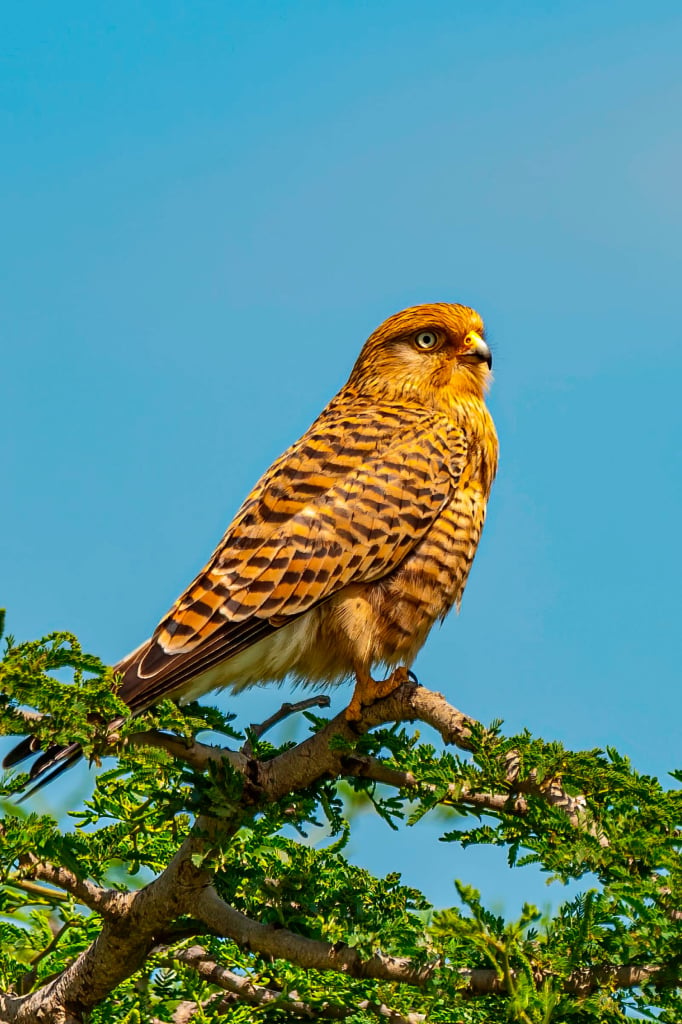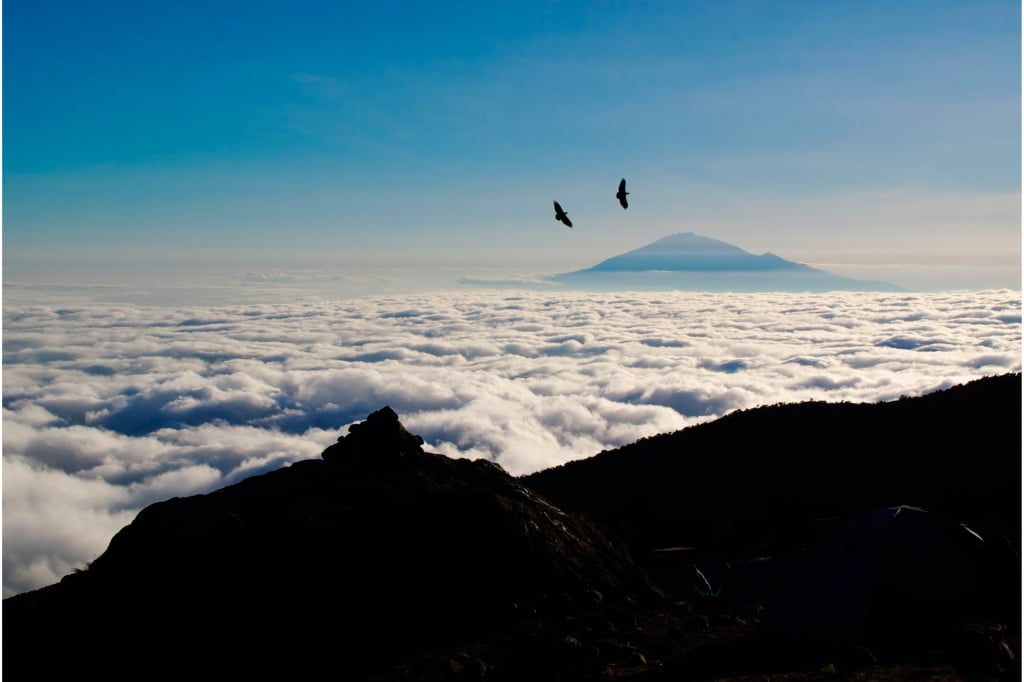
We began to explore the most interesting birding regions of Tanzania with the popular northern parks: Serengeti and Ngorongoro, Tarangire and Lake Manyara. Those names are known around the world. Along with Selous and Ruaha those national parks are among the oldest protected areas in East Africa and attract many enthusiasts interested in birding trips to Tanzania.
Continuing our exploration of important bird areas in the north of the country, let's look into the areas surrounding two major volcanoes in northern Tanzania: Meru and Kilimanjaro. National parks have been created around each, with the two highest mountains of Tanzania at their centers. In addition, in the nearby regions of Arusha, Kilimanjaro, and Manyara there are several separate locations whose avifauna is associated with Mt. Meru and Kilimanjaro. This article will cover the most interesting birds you can see on a Tanzania birding tour in Arusha and Kilimanjaro NPs, Longido, and North Pare.
Arusha National Park
Arusha National Park is located northeast of Lake Manyara and includes the Meru volcano and some territories to the east of it. Most of the NP is covered by mountain forests, as well as by lakes, ponds, and marshes. The important bird zone also includes the forests neighboring the NP. The main water bodies of the NP territory are a group of alkaline lakes called Momella, which attract waterfowl, primarily Greater Flamingoes (Phoenicopterus roseus) and Lesser Flamingoes (Phoeniconaias minor).
Among Tanzanian endemics in Arusha National Park, you can find the Grey-breasted Spurfowl (Pternistis rufopictus), Tanzanian Red-billed Hornbill (Tockus ruahae), Yellow-collared Lovebird (Agapornis personatus), Kilimanjaro White-eye (Zosterops eurycricotus) and Rufous-tailed Weaver (Histurgops ruficaudus).
In total, about 600 species of birds live in the national park. It is believed to be the only protected area in Tanzania selected for wintering and breeding by the Maccoa Duck (Oxyura maccoa). Experienced birders love this place because it's easier to spot forest bird species in Arusha than anywhere else in northern Tanzania. Bird lovers are especially excited when they come across the Narina Trogon (Apaloderma narina). Its closest relative, the Bar-tailed Trogon (Apaloderma vittatum), is also wonderful to observe.
Red-fronted Parrots (Poicephalus gulielmi) are in no way inferior to the trogons in their appearance. There are three subspecies in total, and in this part of Africa, you might spot Poicephalus gulielmi massaicus, which is considered endemic to northern Tanzania and southern Kenya. By the way, you can also see other parrots in Arusha National Park: the Meyer's Parrot (Poicephalus meyeri) and the Red-bellied Parrot (Poicephalus rufiventris). Another bright and interesting bird of the region is the Oriole Finch (Linurgus olivaceus) - the males are distinguished by a yellow body and a bright yellow-orange beak. These are all representatives of montane forest birds.
Mountain streams attract many ducks - a dozen species, including, for example, the African Black Duck (Anas sparsa). This is a very timid duck, so observing it and taking a good picture is something of a challenge for any birder. There are other birds here that are not easy to capture on camera, such as swifts, of which there are at least ten species living in the NP. One of them is the Nyanza Swift (Apus niansae), which appears during the rainy season. Interestingly, it is a scavenger bird that feeds on dead animals. You can see it in the early morning and a couple of hours before sunset. Their flocks in Arusha National Park prefer to settle on high cliffs.
Besides swifts, the local riverbanks are inhabited by White-fronted Bee-eaters (Merops bullockoides), which are not only beautiful in appearance but also have a very interesting and complicated social structure. They make their nests in soft soil, usually on the banks of rivers. These bee-eaters live in large colonies of hundreds of individuals divided into family groups in which young birds help the breeding pairs. It is believed that up to half of the young non-breeders become helpers to the breeding ones, providing support in rearing their young. And if you go higher and explore the volcanic crater Ngurdoto, in the waters of its swamps you can find magnificent Saddle-billed Storks (Ephippiorhynchus senegalensis), very graceful birds who are the largest representatives of the storks. There at the bottom of the crater, these birds feel safe and peacefully make their nests.
By the way, you can climb Mt. Meru Volcano on a separate hiking expedition, taking a national park ranger as an escort and staying in lodges along the route. The same can be done with neighboring Kilimanjaro, choosing one of several routes through the rainforest and Afro-Alpine zone, which is also home to many wonderful bird species.
Kilimanjaro National Park
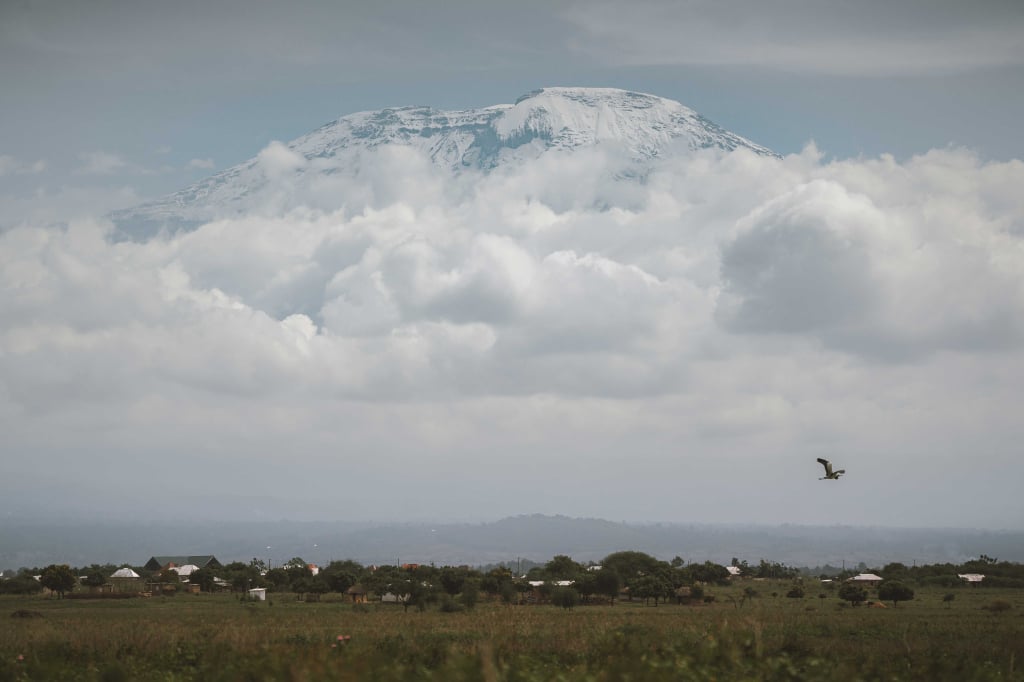
As the highest point in Africa, Mount Kilimanjaro attracts many tourists who want to climb its main peak. Every day people set out to reach Uhuru Peak located at an altitude of 5,895 meters (19 340 feet) above sea level. Throughout the multi-day expedition, climbers can observe a variety of birds. And although it is believed that there are no permanent wildlife habitats above the level of 5000 meters (16404 feet), there are birds living at all altitudes of the famous African mountain.
White-necked Ravens (Corvus albicollis) are known to nest at altitudes of up to 5,800 meters (19029 feet) on Kilimanjaro. One can often see these birds soaring above the mountain, rising high above the clouds. When ascending to higher altitudes, ravens look out for prey or simply for food left by people in the camps.
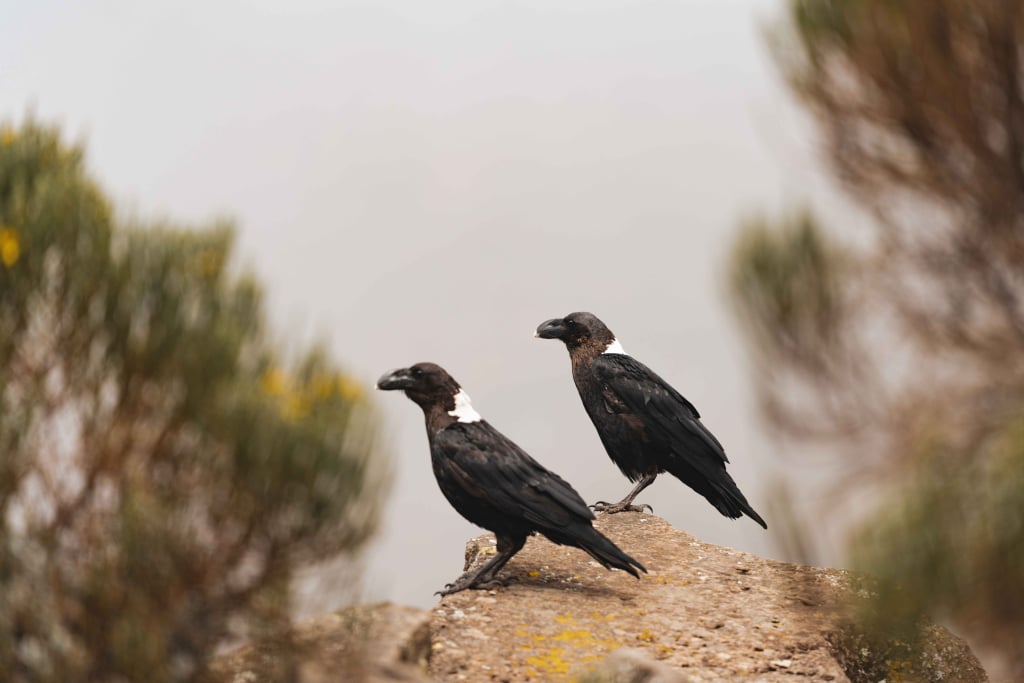
The White-necked Raven is an omnivore. Insects, lizards, small birds and their eggs are all included in its diet. Here you can often see parts of cracked turtle shells on the rocks. The ravens can grab a turtle, lift it high into the air and throw it, gaining access to the delicious meat as the poor turtle falls from a height and crashes. These ravens are also known for patrolling automobile roads, waiting for an unlucky animal to sprint across the road and be run over by a car. The White-necked Raven is a scavenger, and it will be there as soon as the accident happens.
In addition to ravens, Mount Kilimanjaro is often associated with such birds as the Kilimanjaro White-eye (Zosterops eurycricotus), whose name refers to its home - the highest mountain in Tanzania, and the Usambara Thrush (Turdus roehli), named after one of its habitats - the Usambara Mountains located to the southeast of Kilimanjaro. Both species are endemics of Tanzania. Note that the Usambara Thrush used to be considered a subspecies of the Olive Thrush (Turdus olivaceus), and it can still be found under this name in some sources, which mark it not as an independent species.
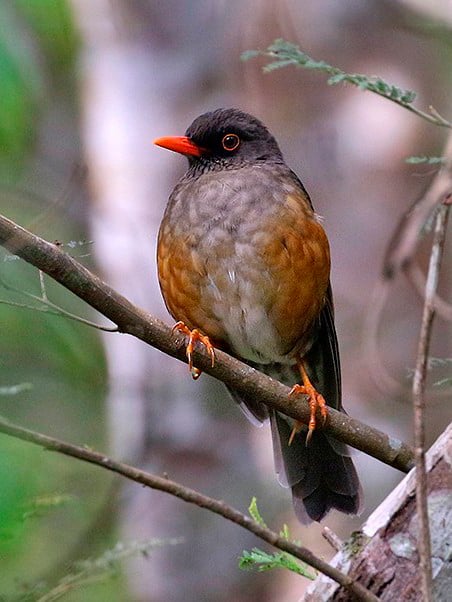
The Usambara Thrush is close to being classified as vulnerable. In addition to this species, four other species of thrush can be seen on Kilimanjaro. And five other bird species have the same status - Near Threatened: the Kori Bustard (Ardeotis kori), Mountain Buzzard (Buteo oreophilus), Fischer's Lovebird (Agapornis fischeri), Crowned Eagle (Stephanoaetus coronatus) and the Bearded Vulture (Gypaetus barbatus). The last two are very interesting raptors.
Eagles hunt monkeys, hyraxes, squirrels, and large birds, but their diet is not limited to these animals. The biggest recorded prey of a crowned eagle is a rather large bushbuck antelope, which weighed about 30 kilograms (66 lb). To kill the prey the eagle relies on its powerful claws and beak.
But the Bearded Vultures, on the other hand, are mostly scavengers. And most of their diet consists of animal bones, which they drop from a great height in order to crush them into small pieces. These birds are persistent in reaching their objectives and are ready to rise into the air 30 or even 40 times to drop a bone and break it into rather small pieces. These birds have stomach juices of high acidity that can digest the bones. At times, they swallow fragments up to 18 centimeters long relying on the unusually wide gap in their mouths. Bones are often left untouched after other predators have eaten, so the vultures can simply patrol the area looking out for tidbits of other animals’ feasts.
Bearded Vultures have been observed at incredible altitudes, for example, in the Himalayas they have been seen at altitudes of up to 7800 meters (25590 feet)! So when you go climbing Kilimanjaro, don't forget to look up.
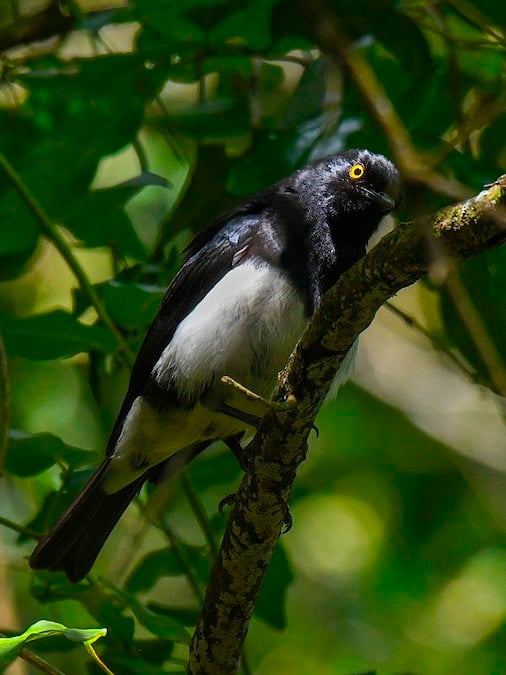
Among the most interesting species inhabiting Kilimanjaro, we would like to mention the smallest of all starlings, which is also classified as Endangered - the Abbott's Starling (Arizelopsar femoralis/Poeoptera femoralis), as well as the Moorland Chat (Pinarochroa sordida) and the Scarlet-tufted Sunbird (Nectarinia johnstoni). The starling can be seen in the forests on the southern and western slopes of Kilimanjaro, but the last two species are residents of the alpine zone located at elevations above 3000 meters (9843 feet), where you can see such amazing plants as Erica excelsa, Lobelia deckenii, and Dendrosenecio kilimanjari - endemics of Kilimanjaro.
As for sunbirds, there are as many as 13 species on Kilimanjaro. Sunbirds have some resemblance to the famous hummingbirds of the Western Hemisphere. They are very similar in appearance, lifestyle, and in many aspects of behavior, except for the fact that sunbirds are slightly larger than hummingbirds. Sunbirds also feed on nectar, for which they have a long beak curved downward. They flutter quickly and can hover for a long time in front of flowers, feeding on the fly. In African ecosystems, these bright birds with metallic plumage play an important role as pollinators. There are a total of 146 species of sunbirds. Interestingly, Tanzania is home to 51 species, five of which are endemics of the country. However, the Eastern Double-collared Sunbird (Cinnyris mediocris) cannot be considered fully endemic to Kilimanjaro, despite the fact that in some languages, such as French, Spanish, and Russian, its name includes the word “Kilimanjaro”. The fact is that it also lives in neighboring Kenya.
All in all, on Mount Kilimanjaro and its surroundings, there are from 130 to 300 species of birds to be observed - data from different resources differ on this. Moreover, birders are often limited to the territory of the national park of the same name and even just to the official Kilimanjaro climbing routes. Birds are much freer in their movements, and nearby locations are naturally connected to the national park area. Ornithologists prefer to explore larger areas.
Longido
East of Kilimanjaro and north of Meru, there stretches a vast dry area that is largely flat, with solitary hills rising above it. It is one of the few important bird areas in Tanzania inhabited by humans. Most of these territories are pastures for Maasai cattle or agricultural land. About 400-500 species of birds can be found here.
This zone is an important migration corridor for birds. It used to be walked by large animals crossing Longido on their way from Kenya's Amboseli to Tanzania's Kilimanjaro and Arusha National Parks, but now they are observed less and less frequently. However, between Mount Meru and Kilimanjaro, many bird species, especially storks and raptors, actively migrate through this area.
Here you can see large numbers of such birds as the Pale or Pallid Harrier (Circus macrourus), Lesser Kestrel (Falco naumanni), Booted Eagle (Hieraaetus pennatus), Steppe Eagle (Aquila nipalensis), Lesser Spotted Eagle (Clanga pomarina) and Common Buzzard (Buteo buteo). Most of them are Palearctic migrants, permanently living in Europe and Asia north of the Himalayas, and sometimes in northern Africa, but migrating to regions south of the Sahara for wintering.
The acacia forests of southwestern Longido are home to a wide variety of birds, many of which are considered unusual in Tanzania. These include, for example, the White-headed Mousebird (Colius leucocephalus), Brown-backed Honeybird (Prodotiscus regulus), Mouse-coloured Penduline Tit (Anthoscopus musculus), Northern Crombec (Sylvietta brachyura), and the Bushveld Pipit (Anthus caffer). The most recognizable among them is, of course, the mousebird, which is easily identified by the white tuft on its head. It likes to settle in thickets of thorny bushes. Its favorite delicacy seems to be the flowering acacia, whose flowers and buds the bird prefers over all other treats.
The White-throated Robin (Irania gutturalis), Kori Bustard (Ardeotis kori), and Secretarybird (Sagittarius serpentarius) have also been seen here. For all its fame and apparent popularity, the secretarybird is an endangered species. This status was given to the species in 2020 due to a rapid decline in its range. If you look at a map of the secretarybird's habitat, you can see very vast areas stretching almost the entire continent south of the Sahara, with the exception of the Congo Delta and the west coast of Africa. In reality, however, the concentration of these birds throughout the entire range area is very low.
This is primarily due to creeping urbanization and active land cultivation. Secretarybirds love large open habitats, but even in national parks, the amount of tall vegetation is increasing, which contributes to reducing the species' range. Their habitats also suffer from overgrazing, burning pastures, and expanding commercial development. The number of secretarybirds is currently estimated at only 6,700-67,000 individuals, and the population continues to decline.
The local population of Spike-heeled Larks (Chersomanes albofasciata) is also thought to be declining in Longido, although the species in general is not threatened. In Tanzania, these birds can be observed mainly here. Other species seen in Longido include the Greater Kestrel (Falco rupicoloides), Somali Short-toed Lark (Alaudala somalica), and the Short-tailed Lark (Spizocorys fremantlii).
North Pare Mountain
35 kilometers (21.7 miles) southeast of Kilimanjaro there are the Pare Mountains, namely their northern part. They are part of the so-called Eastern Arc Mountains, an ancient mountain system that for millions of years was covered by forests similar to those of western Africa. In the last 100 years, humans have cut down more than 70 percent of the forests in the mountains of the Eastern Arc, which means it has significantly impacted local biodiversity in a negative way. And the Pare Mountains were no exception.
The avifauna of the northern Pare Mountains is considered scarce. There are too few trees left and at the same time too many farms; the woodlands are small and isolated from each other. In addition to the anthropogenic impact, the eruptions of the neighboring Kilimanjaro volcano may have also damaged the fauna. So we will lookоло at this location only very briefly. There are slightly more than bird 50 species observed here.
Among interesting bird species in the northern Pare there are the Ovambo Sparrowhawk (Accipiter ovampensis), Eurasian Scops Owl (Otus scops), and the Pallid Honeyguide (Indicator meliphilus). All of these species are quite rare, and it is exciting to find them in the mountain forests.
The curious birder, if possible, will definitely want to travel further south to explore the southern Pare Mountains as well as the Usambara Mountains, because the Eastern Usambara Mountains are one of those places on the planet where nature has created many unique plants and animals that cannot be found anywhere else. The Amani Nature Reserve is a perfect example of a protected area that is worth visiting.
You can find out about other amazing bird areas in Tanzania in our overview article «Tanzania. Top 10 Birdwatching Locations».












